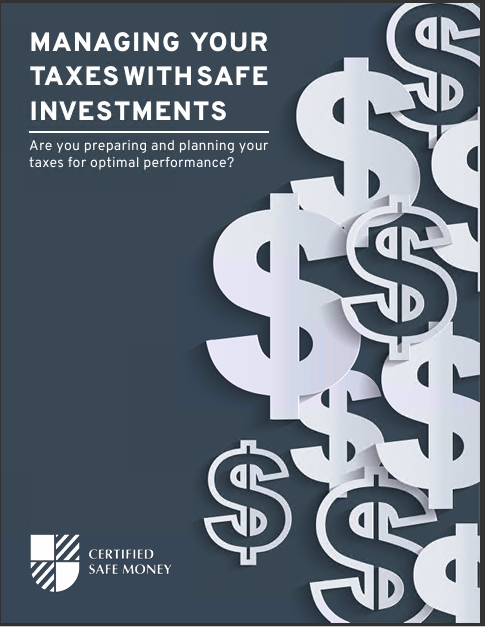Key Takeaways
-
Fixed annuities offer guaranteed returns and predictable income, making them appealing for conservative investors who prioritize safety.
-
Before investing, carefully evaluate annuity fees, surrender charges, tax implications, and how annuities fit into your overall financial plan.
A Safe Bet or Hidden Pitfalls?
You’ve probably heard a lot about fixed annuities as a “safe” investment option, especially if you’re close to retirement or cautious about risking your hard-earned savings. They promise stability and predictable income, two attractive features in uncertain financial times. But before diving in, you should understand exactly what you’re signing up for. Let’s break down four crucial considerations to ensure fixed annuities align with your financial goals.
1. Understand the Real Benefits—and Limitations—of Fixed Annuities
Guaranteed but Conservative Returns
The biggest appeal of fixed annuities is their guaranteed returns. When you purchase a fixed annuity, you agree to hand over your money to an insurance company, and in return, they promise you a specified interest rate and guaranteed payments over a set timeline. Typically, these payments can be structured for 5, 10, or even 20 years, or as lifetime income starting at a certain age (usually retirement).
Here’s what makes fixed annuities attractive:
-
Predictability: You know exactly how much you’ll receive and for how long.
-
Low Risk: Market fluctuations don’t impact your returns.
-
Steady Income Stream: They provide regular payments, helpful for budgeting in retirement.
However, because they’re safe, they offer comparatively modest returns. If inflation rises dramatically, your “guaranteed” returns might barely keep pace, or worse, could fall short, diminishing your purchasing power over time.
Inflation Risk
It’s 2025, and inflation remains an ongoing concern, currently fluctuating between 2-4% annually. If your fixed annuity guarantees a return of only 3% per year, it may not fully protect your purchasing power. Make sure you’re factoring in inflation when estimating your long-term gains.
2. Fees and Charges—Look Beneath the Surface
Surrender Charges: The Hidden Cost
Fixed annuities are meant to be long-term investments. Insurance companies typically impose surrender charges if you withdraw money early (usually within the first 5-10 years). These charges can start high—sometimes up to 10%—and gradually reduce each year until they disappear.
When evaluating fixed annuities, clearly understand:
-
How long the surrender period lasts (commonly 7-10 years).
-
Exactly how much you’ll pay if you withdraw early.
If there’s even a slight chance you’ll need your money before the surrender period ends, reconsider whether a fixed annuity suits your needs.
Administrative and Maintenance Fees
While fixed annuities generally have lower fees compared to variable or indexed annuities, they may still include:
-
Annual maintenance fees
-
Contract fees
-
Optional rider charges
These seemingly small costs can add up over time, eating away at your returns. Always ask for a detailed breakdown of all fees before committing.
3. Tax Implications: Don’t Ignore Uncle Sam
Tax-Deferred—Not Tax-Free
Fixed annuities offer tax-deferred growth, meaning you won’t pay taxes until you start receiving distributions. However, when payments begin, they’re taxed as ordinary income—not at the typically lower long-term capital gains rate.
This means:
-
Your actual spendable income could be lower than anticipated once taxes kick in.
-
Receiving annuity income could potentially bump you into a higher tax bracket.
If you’re considering fixed annuities primarily for tax advantages, remember they’re tax-deferred, not tax-free. Make sure to consider future tax rates and your personal tax situation before committing.
Impact on Estate Planning
Fixed annuities can complicate estate planning. Upon your death, beneficiaries typically owe taxes on the annuity’s gains. Also, unlike some investments that can receive favorable step-up basis treatments, annuities don’t enjoy this benefit. Consult a financial planner to understand how annuities align with your overall estate goals.
4. Assess Your Financial Goals and Retirement Timeline
Aligning Annuities with Your Financial Goals
Fixed annuities are not one-size-fits-all. To know if they’re right for you, align them with your specific financial goals. Consider:
-
Income Needs: Will fixed annuity payments be sufficient for your lifestyle?
-
Retirement Horizon: If you’re younger or have more aggressive goals, investing purely in fixed annuities might limit your growth potential.
-
Liquidity Needs: Fixed annuities lock in your money, potentially restricting cash flow when you might need it most.
Retirement Timeline Considerations
Your timeline significantly impacts whether fixed annuities are advantageous. For instance:
-
Less than 5 years to retirement: A fixed annuity can provide peace of mind, securing a predictable income source.
-
5-15 years away: It could serve as part of your portfolio to stabilize returns while investing elsewhere for growth.
-
Over 15 years away: Fixed annuities might be overly conservative, potentially missing out on market growth opportunities.
Alternative Options: Know Your Choices
Fixed annuities aren’t your only safe money choice. Consider alternative investments to balance risk and growth:
-
Certificates of Deposit (CDs): Offer guaranteed interest but with shorter terms and easier access to your money.
-
Treasury Securities: Government-backed and highly secure, but rates fluctuate based on economic conditions.
-
Bond Funds: Provide stable income, though returns may vary with interest rates.
Diversifying your investment approach by combining fixed annuities with other conservative options might offer greater flexibility and potentially better overall returns.
Making a Confident Choice with Fixed Annuities
When considering a fixed annuity, the key is to be informed. The security they offer can significantly ease financial anxiety, especially as retirement approaches. Yet, clearly understanding fees, taxes, liquidity constraints, and your specific financial timeline is essential. Carefully evaluating these four considerations ensures that if you do choose a fixed annuity, it complements your overall financial strategy rather than restricting it.
The goal isn’t just financial safety—it’s financial wisdom. A balanced, informed decision is your best route to lasting peace of mind.













